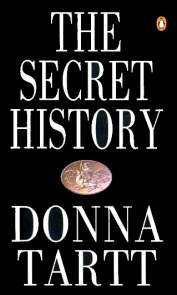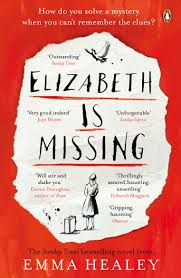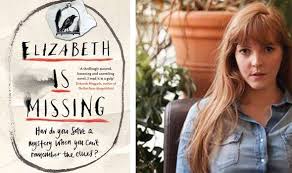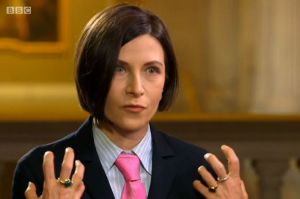The Winter War, Philip Teir, Serpents Tail 2013
February 1, 2016 at 9:43 pm | Posted in Freedom, Middle Weight Fiction, Popular Fiction, The Winter War | Leave a commentThis debut novel has been compared with Jonathan Franzen’s magnificent ‘Freedom’ but this parallel pays no compliment to either book. The scope and style of ‘Freedom’ is imagined with much more daring and detail than ‘The Winter War’ but as I say the comparison is redundant. The ‘Winter War’ in it’s own style is evocative and thoughtful but is also identifi able as a debut novel. The story chronicles the demise of an upper middle class marriage against the backdrop of a hard Helsinki winter.
able as a debut novel. The story chronicles the demise of an upper middle class marriage against the backdrop of a hard Helsinki winter.
The Winter War of 1939-1940 was fought between Finland and the Soviet Union and took the same length of time to be over as did the marriage of the two main characters of ‘The Winter War’ Max and Katriina.
The prose is gentle and subtle an ebbing and flowing of the mind of Max of his going back and forth between decisions in an undefined search. The secondary story of Max and Katriina’s daughter moving to London to pursue an education in fine Art and assert her bohemian side is an interesting but disconnected piece.
This novel treats you to the experience of an unforgiving Helsinki winter and the unforgiving implosion of a marriage neglected and fermented. To paint such pictures is a tribute to the new author whose next novel I’ll be sure to read also. As we all are, this novel is perfect in it’s own imperfections.
The book in haiku: Helsinki snowstorm, falling silently at night, too heavy to dig
The Secret History Donna Tartt
April 4, 2014 at 4:24 pm | Posted in Award winners, Middle Weight Fiction, Popular Fiction, The Secret History | 1 CommentTags: Book Clubs, book review, Book Reviews, bookclub, Bookreviews, good book reviews, Great Reads, popular fiction, recomended reads

It is understandable how Donna Tartt’s ‘The Secret History’ became a long-term bestseller and conquered a place in so many book lovers hearts. The story centered on a group of young bright affluent students at an exclusive Vermont College in the 1980’s roaming wild and burning through money is exceptionally engaging .and compulsively addictive.
The young group is composed of a variety of apparently sympathetic characters Richard who, unlike his peers, is on a scholarship to the exclusive college and is at great pains to conceal his blue-collar roots, twins Camilla and Charles known for their manners and gentle ways, Henry the emergent leader of the group remarkable for his adaptability to changes in circumstance and ability to mix easily with all sorts of people and also Francis and Bunny who enjoy all life has to offer with great self-assurance. What the characters all have in common is that they are all students of the charismatic erudite Professor Julian Morrow who teaches them Classics exclusively to a level of detail and reverence far above the academic norm.
Inspired deeply by their passionate teacher a few members of the group perform a Dionysian rite one night (a rite designed to work the worshiper into a state of ecstasy in order to feel the power of the gods through wine, dancing and often sexual expression) but the rite has truly gross consequences for the group which go on to drive the plot to even wilder and darker places and the death of Bunny Corcoran (whose death is revealed to the reader in the first line of the novel). 
Do not look for redemption, regret or guilty melancholy from this group, as a reader the novel demands that one must think much bigger when it comes to this motley crew and contemplate openly Donna Tartt’s brilliant subtle suggestions that Henry may himself be the devil incarnate and that in this existential world absolutely anything is possible once you have the nerve and stomach for it.
The plot is set in the familiar routines of college life against the rich dripping backdrop of the classical world of Greek and Latin language, prose and poetry. Donna Tartt’s prose is just so accomplished that at times it feels like God himself has lifted the telephone to call you personally and reveal some select mysteries of the world;
‘…there was never any doubt that he (Henry) did not wish to see us in our entirety, or see us, in fact, in anything other that the magnificent roles he had invented for us: genis gratus, corpore glabellus, arte multiscius, et fortuna opulentus – smooth cheeked, soft-skinned, well-educated, and rich. It was his odd blindness, I think, to all problems of a personal nature which made him able at the end to transmute even Bunny’s highly substantive troubles into spiritual ones.’
The novel in haiku; murderous thoughts fly, money and nerve conquer all, but it takes just one
Rules for formulaic fiction
April 11, 2013 at 3:47 pm | Posted in House Rules, Popular Fiction | 4 CommentsTags: Book Reviews, Books, popular fiction
House Rules by Jodi Picoult
Hodder 2010
House Rules is Jodi Picoult’s seventeenth novel and the first Jodi Picoult book I have read. The title refers to the rules that govern the home of Emma Hunt and her two sons one of whom Jacob lives with Asperger’s Syndrome; an autism spectrum disorder that is characterized by significant difficulties in social interaction and repetitive patterns of behavior and interests.
The plot is quite interesting; Jacob’s social skills tutor is found dead and Jacob’s mother can’t rule out the possibility that Jacob may have killed her due to Jacob’s preoccupation with forensic science and crime scenes. Jacob’s Asperger’s behaviors– not looking people in the eye, yes/no answers and stimulatory tic’s coupled with his kooky hobby make Jacob appear guilty to the police and prosecution team. Emma must summon all her maternal courage and finances to defend Jacob in a trial that tears through their family life and house rules.
The novel has a cast of characters just as you imagine it would need. A handsome and struggling young lawyer, a brave single father town sheriff, a renegade father who left Emma and her sons when Jacob was first diagnosed. Emma is the most thoughtful character in my opinion who shows the rationale and love you would expect of a devoted mother. The novel is driven by hundreds of small chapters of each characters viewpoint which do weave together to show a well plotted driven novel.
Would I read another Jodi Picoult novel? No probably not. If this novel is symptomatic of her other sixteen novels it’s as if I have read them already. Although well researched it felt formulaic. Although quite compelling it felt quite empty. Jodi Picoult’s website however deserves respect, full of reading aids and book club questions it reveres the art of the novel and while her novels may not be to my taste they obviously are to millions of other readers. 
House Rules in Haiku: Jacob and Emma, together look for the truth, but can it be found?
Tigers in Red Weather
February 16, 2013 at 6:00 pm | Posted in Great for Book Clubs, Middle Weight Fiction, Popular Fiction | 1 CommentTags: Book Clubs, Book Reviews, popular fiction
 Tigers in Red Weather by Liza Klausmann Picador 2013
Tigers in Red Weather by Liza Klausmann Picador 2013
Tigers in Red Weather is a family epic starting at the end of World War two which is successfully told from five familial perspectives culminating in a family portrait which only the reader is privy to. It is such an accomplished and insightful read it is hard to believe that it is a debut novel.
The plot spans two decades beginning with main characters husband and wife team Hughes and Nick who are young newlyweds setting up home after Hughes return from the Navy. We are then introduced to Helena Nick’s cousin with whom she is extremely close. Both women are determined to defy normality and the status quo in their lives at all costs. Nick’s cousin Helena is preparing to leave for Hollywood and a new life and Nick is determined never to be a bored housewife.
Over two decades the two women’s lives unfold in ways neither of them predicted. Disillusionment sets in and is softened with gin soaked summers spent together with their families in Tiger House where white picket fences and tennis lessons abound. This is also a coming of age story for the women’s two offspring Nick’s daughter Daisy and Helena’s son Ed with a midsummer murder worked into the plot. By their attempts to defy convention oddly the two women find themselves and the love they crave. Following the five narratives we see the consequences of the two women’s attempts at avoiding conventional life at all costs subverting family life and allowing darkness into their lives.
The story is well plotted, interesting and Klausmann’s writing is meaningful. It is a character driven novel all of whom are well developed and is a very enjoyable picture of a family growing from the early 1950’s to 1970’s dotted with fine and beautifully written insights into human life and love along the way. For regular readers of middle weight fiction this will not disappoint.
Haiku: Tigers all about, where you might not expect them, will create a storm!
The five year wait is over!
February 1, 2010 at 8:07 pm | Posted in Popular Fiction | Leave a comment Audrey Niffenegger ‘Her Fearful Symmetry’ , Jonathan Cape 2009
Audrey Niffenegger ‘Her Fearful Symmetry’ , Jonathan Cape 2009
If you are like me you’ve been waiting patiently for five years for the new book from Audrey Niffenegger, author of the wonderful ‘Time Travellers Wife’. ‘Her Fearful Symmetry’ won’t let you down but in a very different way. It is the story of two American sisters who are identical mirror twins. They inherit an apartment, from an aunt they never knew about, which overlooks Highgate Cemetery in London and along with it they inherit a history and an adventure they hadn’t banked on at all. The book is well plotted and the story reveals itself to you at a perfect pace. Audrey Niffenegger will have you enthralled in this story before you know it’s happened. The sisters are very likeable and their sibling relationship is very human. The book’s charm comes from the supernatural dimensions of the story though. It’s modern, spooky and an easy charming read. My only grievance would be the detailed descriptions given over to Highgate Cemetery. It felt like Audrey had over researched this part and felt compelled to include it all in the story which wasn’t necessary but this was my only complaint- it’s a wonderful read and the only book to make me cry by page two! Audrey is the mistress of human emotion.
Haiku; Supernatural, over researched new book, makes me miss the first
Create a free website or blog at WordPress.com.
Entries and comments feeds.




